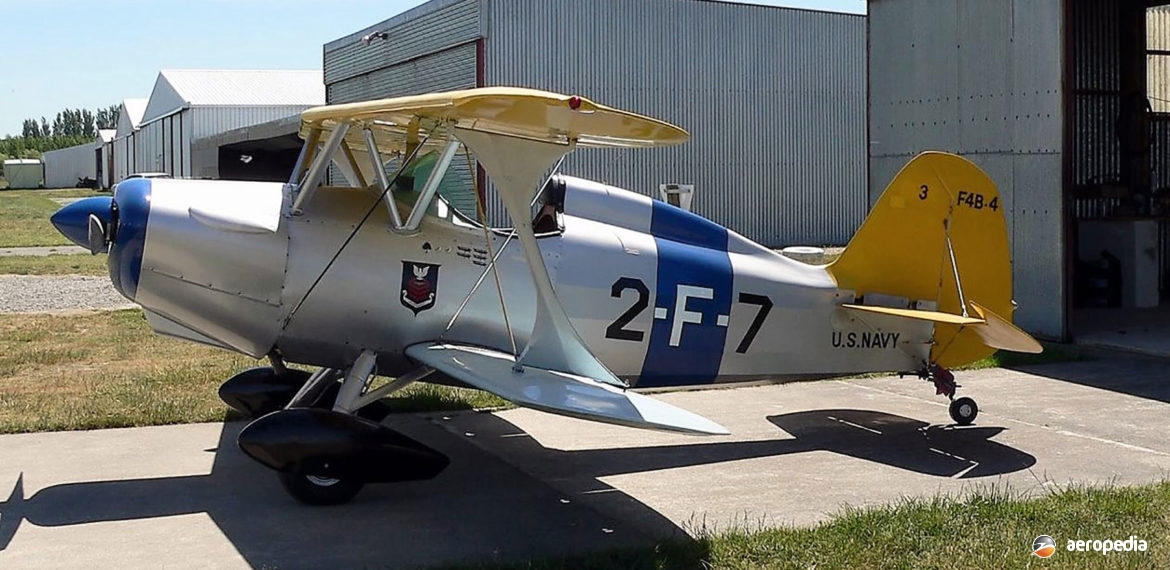Photograph:
Stolp SA-100 Starduster ZK-SDI (c/n 14) at Rangiora, New Zealand (NZCIVAIR)
Country of origin:
United States of America
Description:
Single-seat light sport biplane
Power Plant:
One 93 kw (125 hp) Lycoming O-290-D-1 four-cylinder horizontally-opposed air-cooled engine
Specifications:
- Wingspan [upper]: 5.79 m (19 ft)
- Wingspan [lower]: 5.49 m (18 ft)
- Length: 5.03 m (16 ft 6 in)
- Height: 1.83 m (6 ft)
- Wing area: 10.22 m² (110.00 sq ft)
- Max speed: 238 km/h (148 mph)
- Cruising speed: 209 km/h (140 mph)
- Stalling speed: 89 km/h (55 mph)
- Rate of climb: 610 m/min (2,000 ft/min)
- Range: 644 km (400 miles)
- Fuel capacity: 91 litres (20 Imp gals)
- Take-off run: 61 m (200 ft)
- Landing run: 91 m (300 ft)
- Empty weight: 318 kg (700 lb)
- Loaded weight: 490 kg (1,080 lb)
History:
The Stolp SA-100 Starduster was designed by Louis Stolp in the United States as a single-seat light sporting biplane and was aimed at the popular sport aviation market in America at that time. The prototype was completed and flew for the first time in November 1957. It was subsequently sold in plan form for construction by amateur builders and was marketed by Aircraft Spruce and Specialty Ltd.
The SA-100 was the first in the series and was a single-bay biplane with fabric covering. The wings were constructed of wood and each was braced by a single interplane strut aided by flying wires. Eight centre-section struts attached the wing to the fuselage. Whilst the lower wing was unswept and had a dihedral, the upper wing had sweep at the leading-edge and had ailerons only on the lower wings.
The fuselage and tail unit were of steel tube construction with fabric covering, the open cockpit being just below the trailing edge of the upper wing. The tail was conventional with a wire-braced tailplane and straight tapered, the rudder and elevators being horn balanced. Engines ranging from 93 kw to 119 kw (125 hp to 160 hp) could be installed but the Lycoming O-290 series was the most popular, driving a Sensenich M74DM61 fixed pitch two-blade propeller. It had a tailwheel undercarriage, the main wheels having rubber shock absorbers, and on occasion the main undercarriage legs were enclosed in spats.
Development of the type continued to the SA-101 Super Starduster, this varying from the SA-100 in having the lengthened wings of the CA-300 Starduster TOO and was usually fitted with a 134 kw (180 hp) Lycoming IO-360 engine.
Only one example has been operated in this region, this aircraft flying in New Zealand from Rangiora and becoming ZK-SDI (c/n14) to its owner Alan Ryde on 22 January 2008, this aircraft having previously operated in the United States as N73R.

